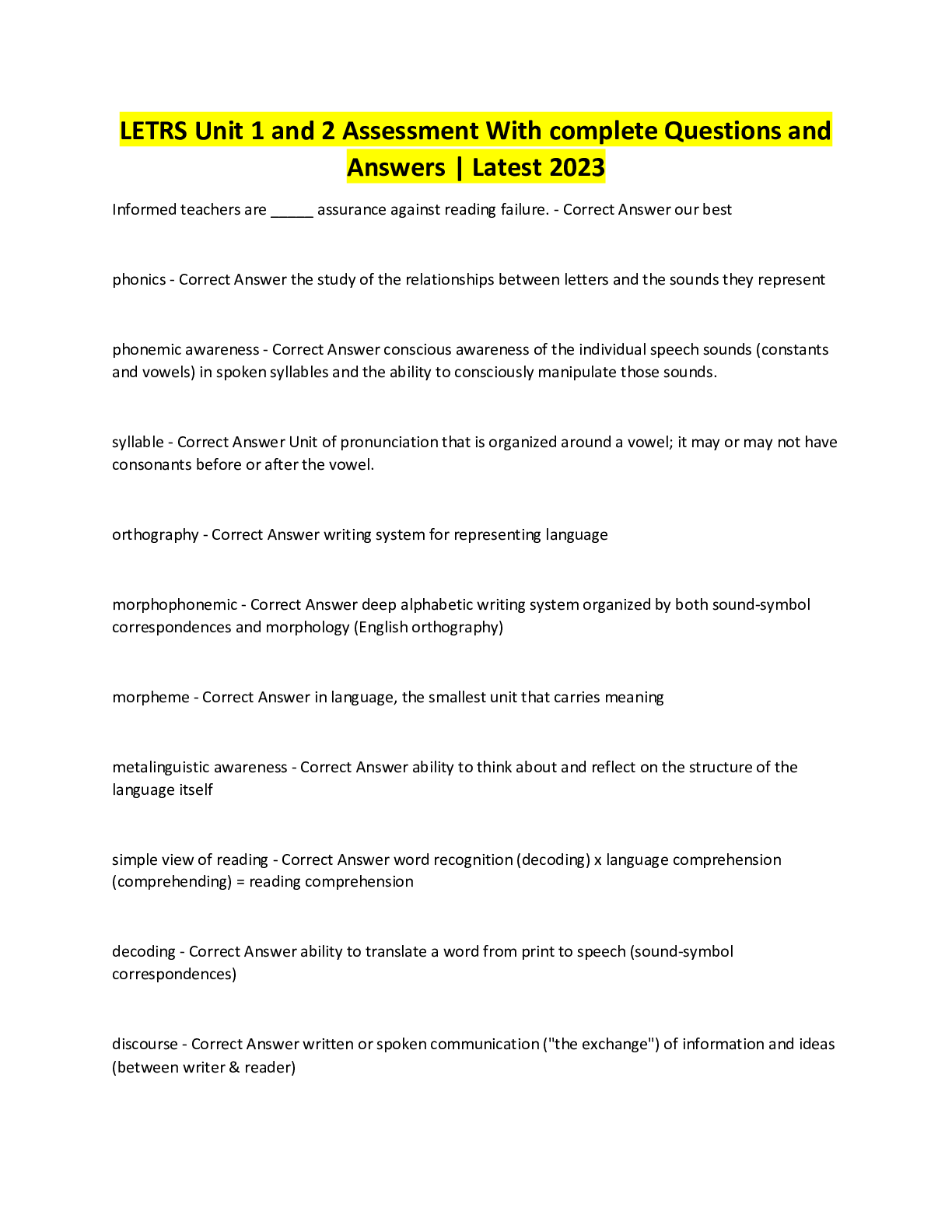*NURSING > EXAM > Anatomy and Physiology. Text Book. All 28 Chapters in 2456 Pages. Questions And Answers Content in t (All)
Anatomy and Physiology. Text Book. All 28 Chapters in 2456 Pages. Questions And Answers Content in the Document Description Below/ Rated A.
Document Content and Description Below
Table of Contents Preface Unit 1: Levels of Organization Chapter 1: An Introduction to the Human Body 1.1 Overview of Anatomy and Physiology 1.2 Structural Organization of the Human Body 1.3 Fun ction... s of Human Life 1.4 Requirements for Human Life 1.5 Homeostasis 1.6 Anatomical Terminology 1.7 Medical Imaging Chapter 2: The Chemical Level of Organization 2.1 Elements and Atoms: The Building Blocks of Matter 2.2 Chemical Bonds 2.3 Chemical Reactions 2.4 Inorganic Compounds Essential to Human Functioning 2.5 Organic Compounds Essential to Human Functioning Chapter 3: The Cellular Level of Organization 3.1 The Cell Membrane 3.2 The Cytoplasm and Cellular Organelles 3.3 The Nucleus and DNA Replication 3.4 Protein Synthesis 3.5 Cell Growth and Division 3.6 Cellular Differentiation Chapter 4: The Tissue Level of Organization 4.1 Types of Tissues 4.2 Epithelial Tissue 4.3 Connective Tissue Supports and Protects 4.4 Muscle Tissue and Motion 4.5 Nervous Tissue Mediates Perception and Response 4.6 Tissue Injury and Aging Unit 2: Support and MovementChapter 5: The Integumentary System 5.1 Layers of the Skin 5.2 Accessory Structures of the Skin 5.3 Functions of the Integumentary System 5.4 Diseases, Disorders, and Injuries of the Integumentary System Chapter 6: Bone Tissue and the Skeletal System 6.1 The Functions of the Skeletal System 6.2 Bone Classification 6.3 Bone Structure 6.4 Bone Formation and Development 6.5 Fractures: Bone Repair 6.6 Exercise, Nutrition, Hormones, and Bone Tissue 6.7 Calcium Homeostasis: Interactions of the Skeletal System and Other Organ Systems Chapter 7: Axial Skeleton 7.1 Divisions of the Skeletal System 7.2 The Skull 7.3 The Vertebral Column 7.4 The Thoracic Cage 7.5 Embryonic Development of the Axial Skeleton Chapter 8: The Appendicular Skeleton 8.1 The Pectoral Girdle 8.2 Bones of the Upper Limb 8.3 The Pelvic Girdle and Pelvis 8.4 Bones of the Lower Limb 8.5 Development of the Appendicular Skeleton Chapter 9: Joints 9.1 Classification of Joints 9.2 Fibrous Joints 9.3 Cartilaginous Joints 9.4 Synovial Joints 9.5 Types of Body Movements 9.6 Anatomy of Selected Synovial Joints 9.7 Development of Joints Chapter 10: Muscle Tissue 10.1 Overview of Muscle Tissues 10.2 Skeletal Muscle10.3 Muscle Fiber Contraction and Relaxation 10.4 Nervous System Control of Muscle Tension 10.5 Types of Muscle Fibers 10.6 Exercise and Muscle Performance 10.7 Cardiac Muscle Tissue 10.8 Smooth Muscle 10.9 Development and Regeneration of Muscle Tissue Chapter 11: The Muscular System 11.1 Interactions of Skeletal Muscles, Their Fascicle Arrangement, and Their Lever Systems 11.2 Naming Skeletal Muscles 11.3 Axial Muscles of the Head, Neck, and Back 11.4 Axial Muscles of the Abdominal Wall and Thorax 11.5 Muscles of the Pectoral Girdle and Upper Limbs 11.6 Appendicular Muscles of the Pelvic Girdle and Lower Limbs Unit 3: Regulation, Integration, and Control Chapter 12: The Nervous System and Nervous Tissue 12.1 Basic Structure and Function of the Nervous System 12.2 Nervous Tissue 12.3 The Function of Nervous Tissue 12.4 The Action Potential 12.5 Communication Between Neurons Chapter 13: Anatomy of the Nervous System 13.1 The Embryologic Perspective 13.2 The Central Nervous System 13.3 Circulation and the Central Nervous System 13.4 The Peripheral Nervous System Chapter 14: The Somatic Nervous System 14.1 Sensory Perception 14.2 Central Processing 14.3 Motor Responses Chapter 15: The Autonomic Nervous System 15.1 Divisions of the Autonomic Nervous System 15.2 Autonomic Reflexes and Homeostasis 15.3 Central Control 15.4 Drugs that Affect the Autonomic System Chapter 16: The Neurological Exam16.1 Overview of the Neurological Exam 16.2 The Mental Status Exam 16.3 The Cranial Nerve Exam 16.4 The Sensory and Motor Exams 16.5 The Coordination and Gait Exams Chapter 17: The Endocrine System 17.1 An Overview of the Endocrine System 17.2 Hormones 17.3 The Pituitary Gland and Hypothalamus 17.4 The Thyroid Gland 17.5 The Parathyroid Glands 17.6 The Adrenal Glands 17.7 The Pineal Gland 17.8 Gonadal and Placental Hormones 17.9 The Endocrine Pancreas 17.10 Organs with Secondary Endocrine Functions 17.11 Development and Aging of the Endocrine System Unit 4: Fluids and Transport Chapter 18: The Cardiovascular System: Blood 18.1 An Overview of Blood 18.2 Production of the Formed Elements 18.3 Erythrocytes 18.4 Leukocytes and Platelets 18.5 Hemostasis 18.6 Blood Typing Chapter 19: The Cardiovascular System: The Heart 19.1 Heart Anatomy 19.2 Cardiac Muscle and Electrical Activity 19.3 Cardiac Cycle 19.4 Cardiac Physiology 19.5 Development of the Heart Chapter 20: The Cardiovascular System: Blood Vessels and Circulation 20.1 Structure and Function of Blood Vessels 20.2 Blood Flow, Blood Pressure, and Resistance 20.3 Capillary Exchange 20.4 Homeostatic Regulation of the Vascular System20.5 Circulatory Pathways 20.6 Development of Blood Vessels and Fetal Circulation Chapter 21: The Lymphatic and Immune System 21.1 Anatomy of the Lymphatic and Immune Systems 21.2 Barrier Defenses and the Innate Immune Response 21.3 The Adaptive Immune Response: T lymphocytes and Their Functional Types 21.4 The Adaptive Immune Response: B-lymphocytes and Antibodies 21.5 The Immune Response against Pathogens 21.6 Diseases Associated with Depressed or Overactive Immune Responses 21.7 Transplantation and Cancer Immunology Unit 5: Energy, Maintenance, and Environmental Exchange Chapter 22: The Respiratory System 22.1 Organs and Structures of the Respiratory System 22.2 The Lungs 22.3 The Process of Breathing 22.4 Gas Exchange 22.5 Transport of Gases 22.6 Modifications in Respiratory Functions 22.7 Embryonic Development of the Respiratory System Chapter 23: The Digestive System 23.1 Overview of the Digestive System 23.2 Digestive System Processes and Regulation 23.3 The Mouth, Pharynx, and Esophagus 23.4 The Stomach 23.5 The Small and Large Intestines 23.6 Accessory Organs in Digestion: The Liver, Pancreas, and Gallbladder 23.7 Chemical Digestion and Absorption: A Closer Look Chapter 24: Metabolism and Nutrition 24.1 Overview of Metabolic Reactions 24.2 Carbohydrate Metabolism 24.3 Lipid Metabolism 24.4 Protein Metabolism 24.5 Metabolic States of the Body24.6 Energy and Heat Balance 24.7 Nutrition and Diet Chapter 25: The Urinary System 25.1 Physical Characteristics of Urine 25.2 Gross Anatomy of Urine Transport 25.3 Gross Anatomy of the Kidney 25.4 Microscopic Anatomy of the Kidney 25.5 Physiology of Urine Formation 25.6 Tubular Reabsorption 25.7 Regulation of Renal Blood Flow 25.8 Endocrine Regulation of Kidney Function 25.9 Regulation of Fluid Volume and Composition 25.10 The Urinary System and Homeostasis Chapter 26: Fluid, Electrolyte, and Acid-Base Balance 26.1 Body Fluids and Fluid Compartments 26.2 Water Balance 26.3 Electrolyte Balance 26.4 Acid-Base Balance 26.5 Disorders of Acid-Base Balance Unit 6: Human Development and the Continuity of Life Chapter 27: The Reproductive System 27.1 Anatomy and Physiology of the Male Reproductive System 27.2 Anatomy and Physiology of the Female Reproductive System 27.3 Development of the Male and Female Reproductive Systems Chapter 28: Development and Inheritance 28.1 Fertilization 28.2 Embryonic Development 28.3 Fetal Development 28.4 Maternal Changes During Pregnancy, Labor, and Birth 28.5 Adjustments of the Infant at Birth and Postnatal Stages 28.6 Lactation 28.7 Patterns of Inheritan Show Less [Show More]
Last updated: 1 year ago
Preview 1 out of 2 pages
Instant download
Instant download
Reviews( 0 )
Document information
Connected school, study & course
About the document
Uploaded On
Jul 20, 2021
Number of pages
2
Written in
Additional information
This document has been written for:
Uploaded
Jul 20, 2021
Downloads
0
Views
171


.png)
.png)
.png)
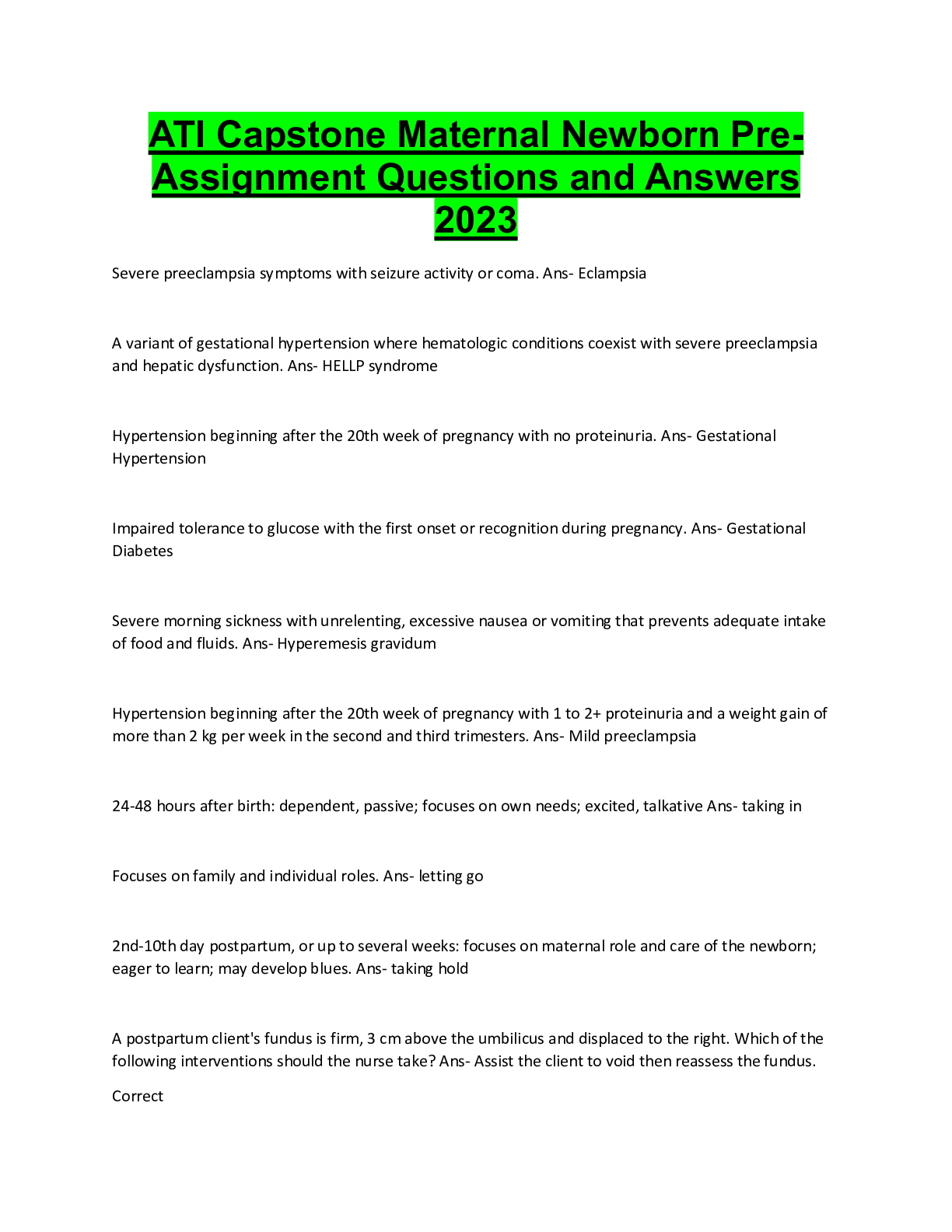


.png)
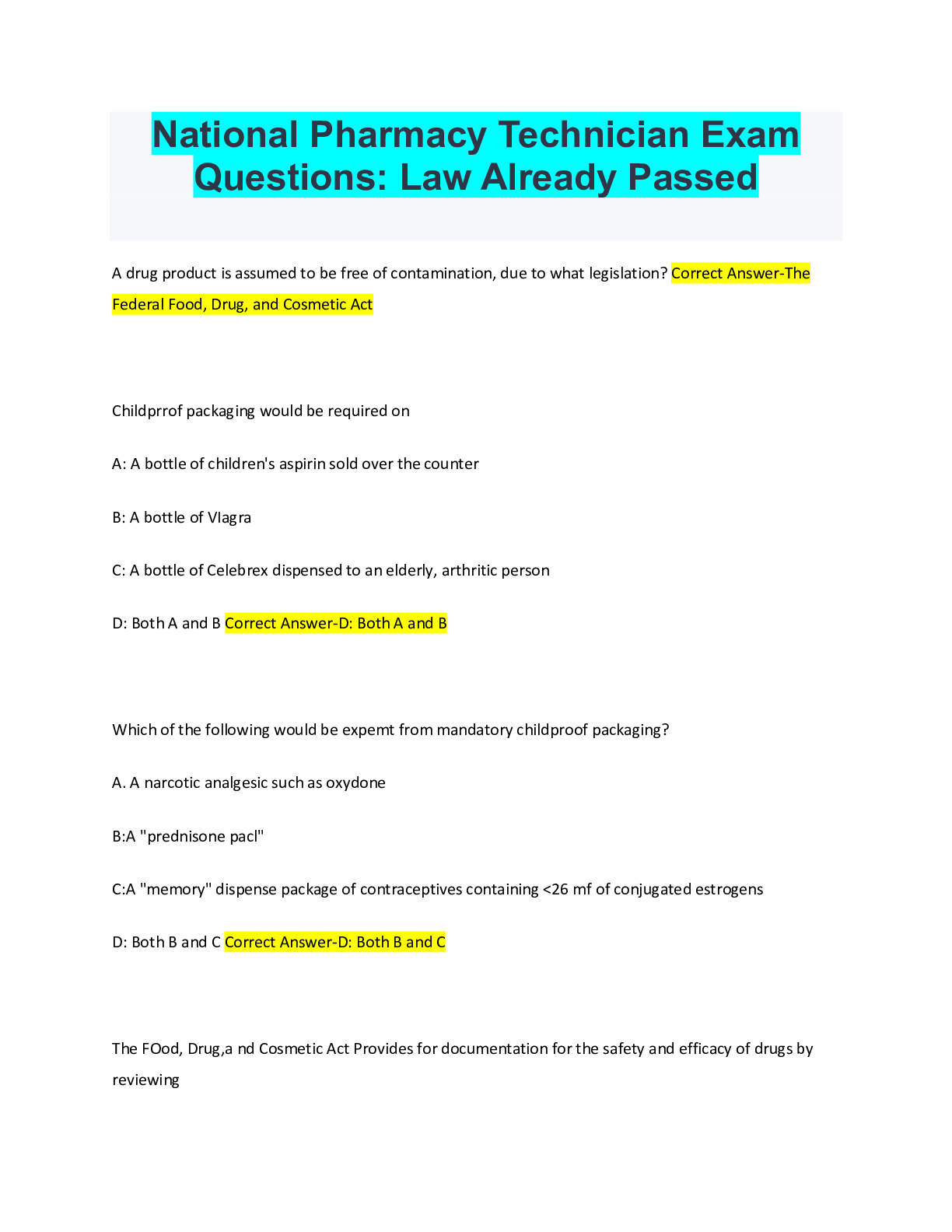
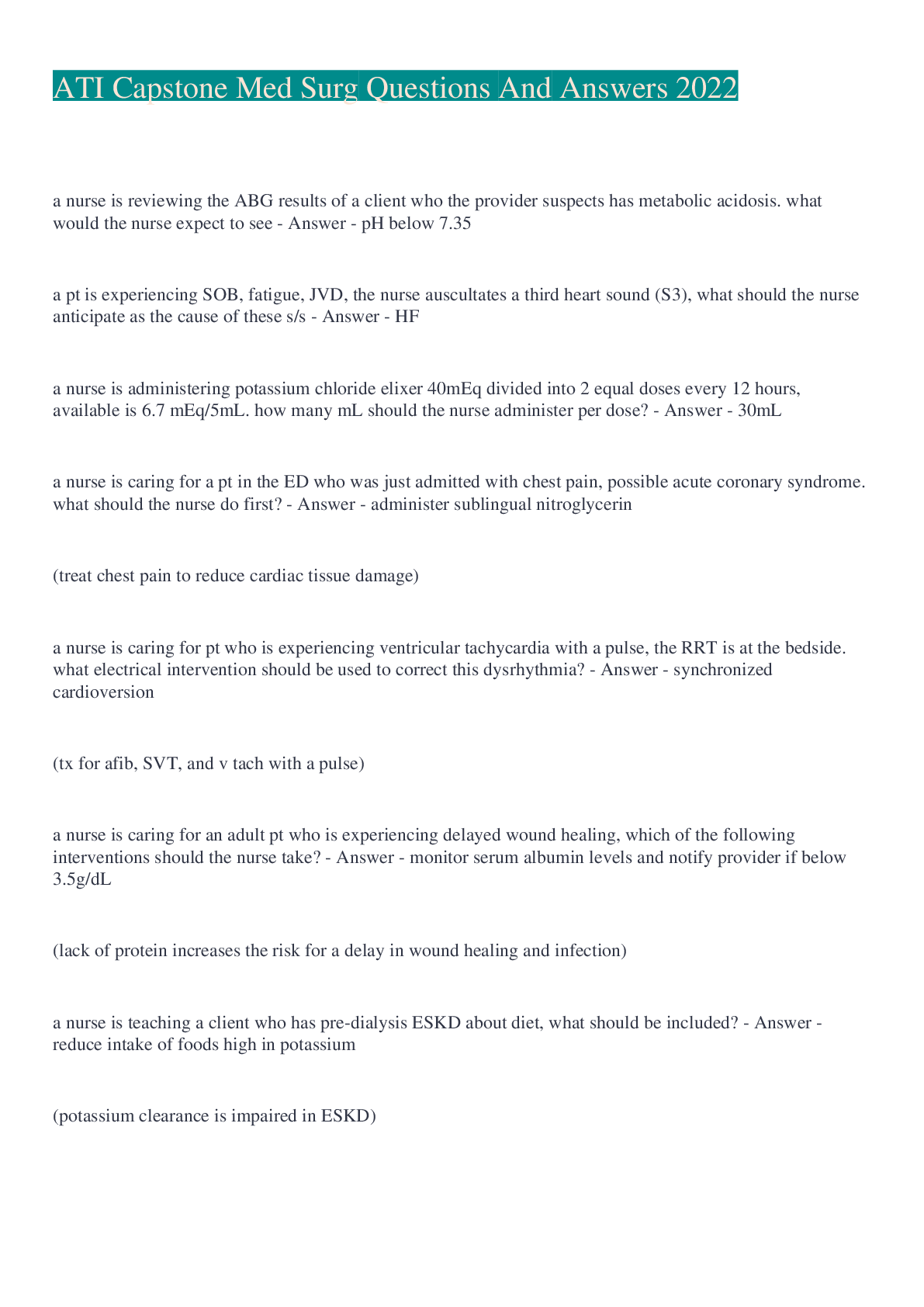

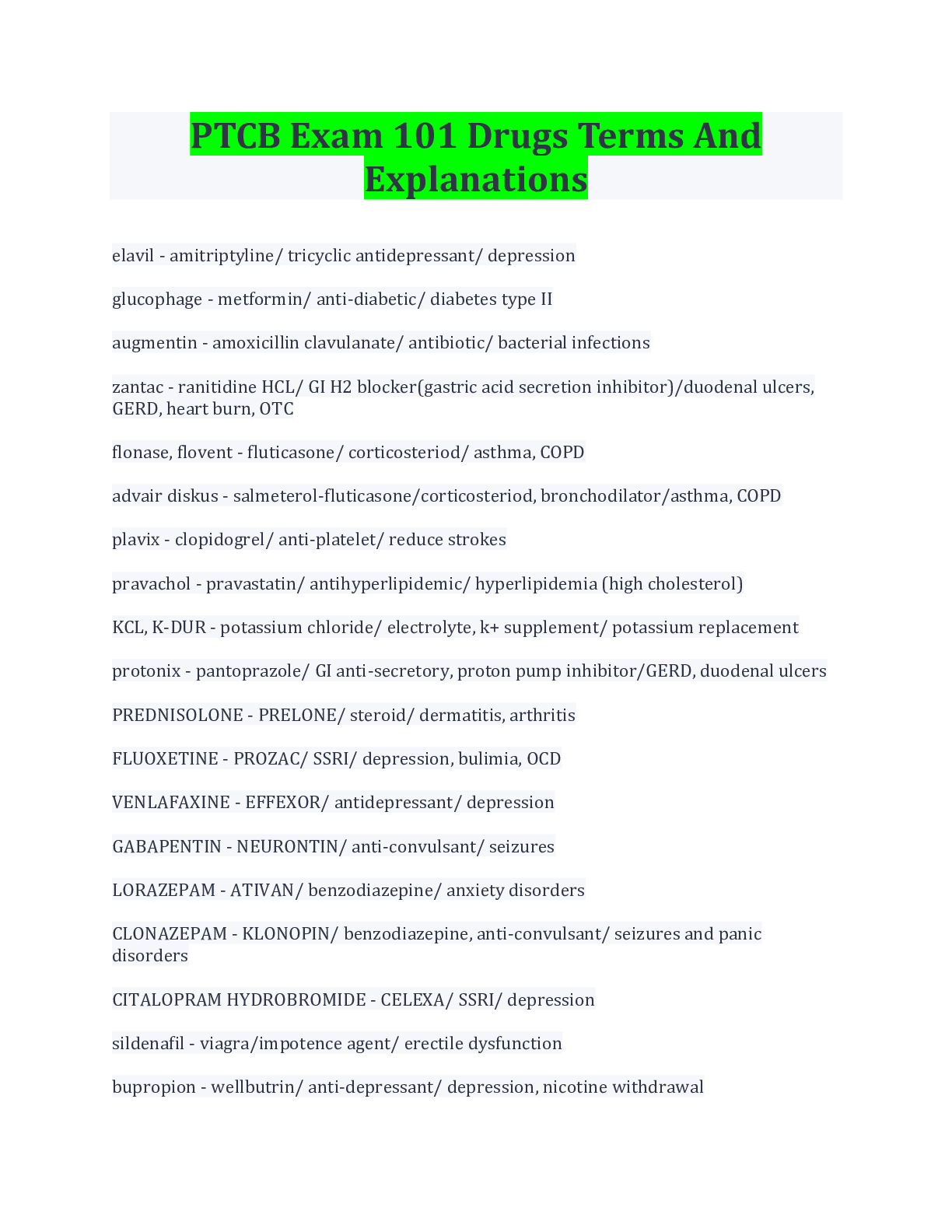

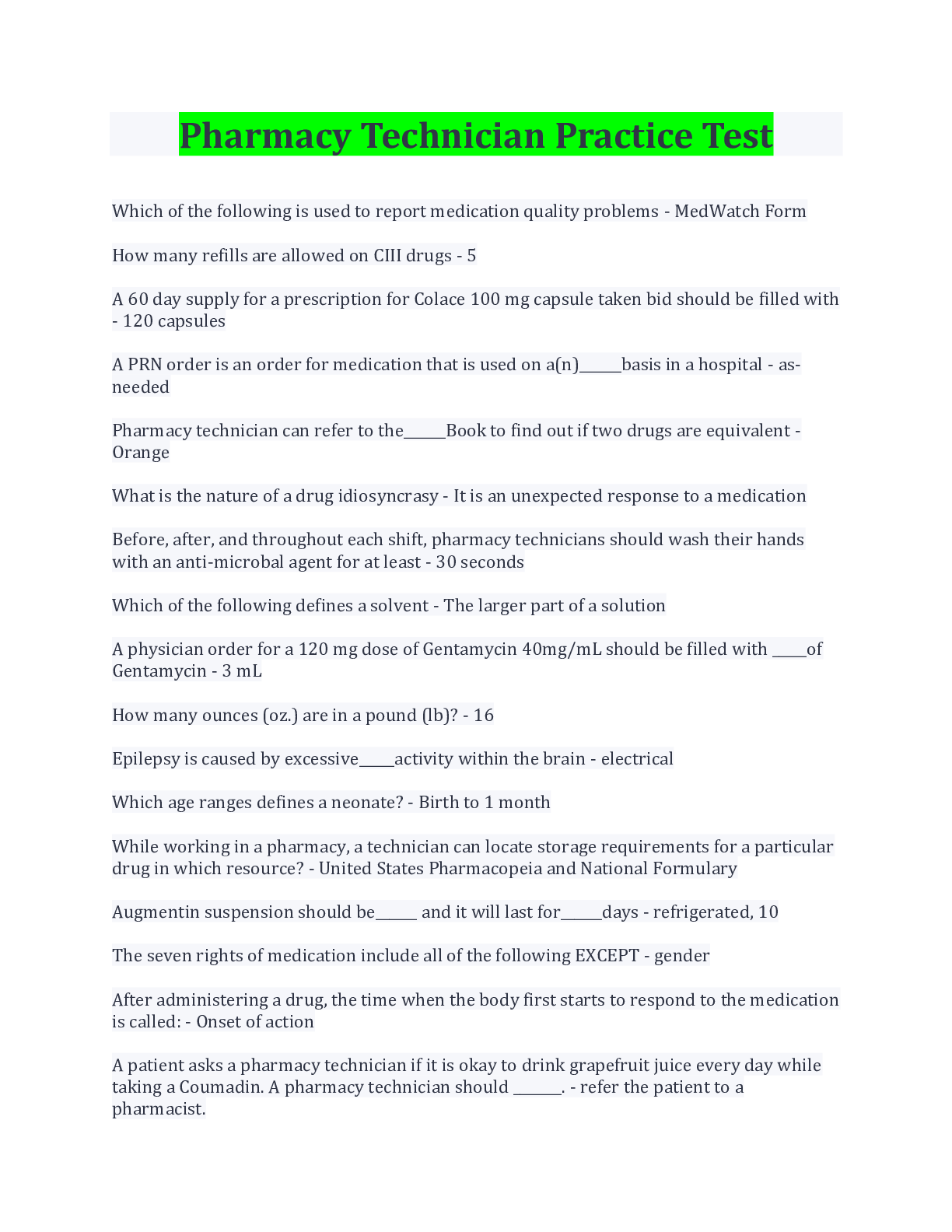
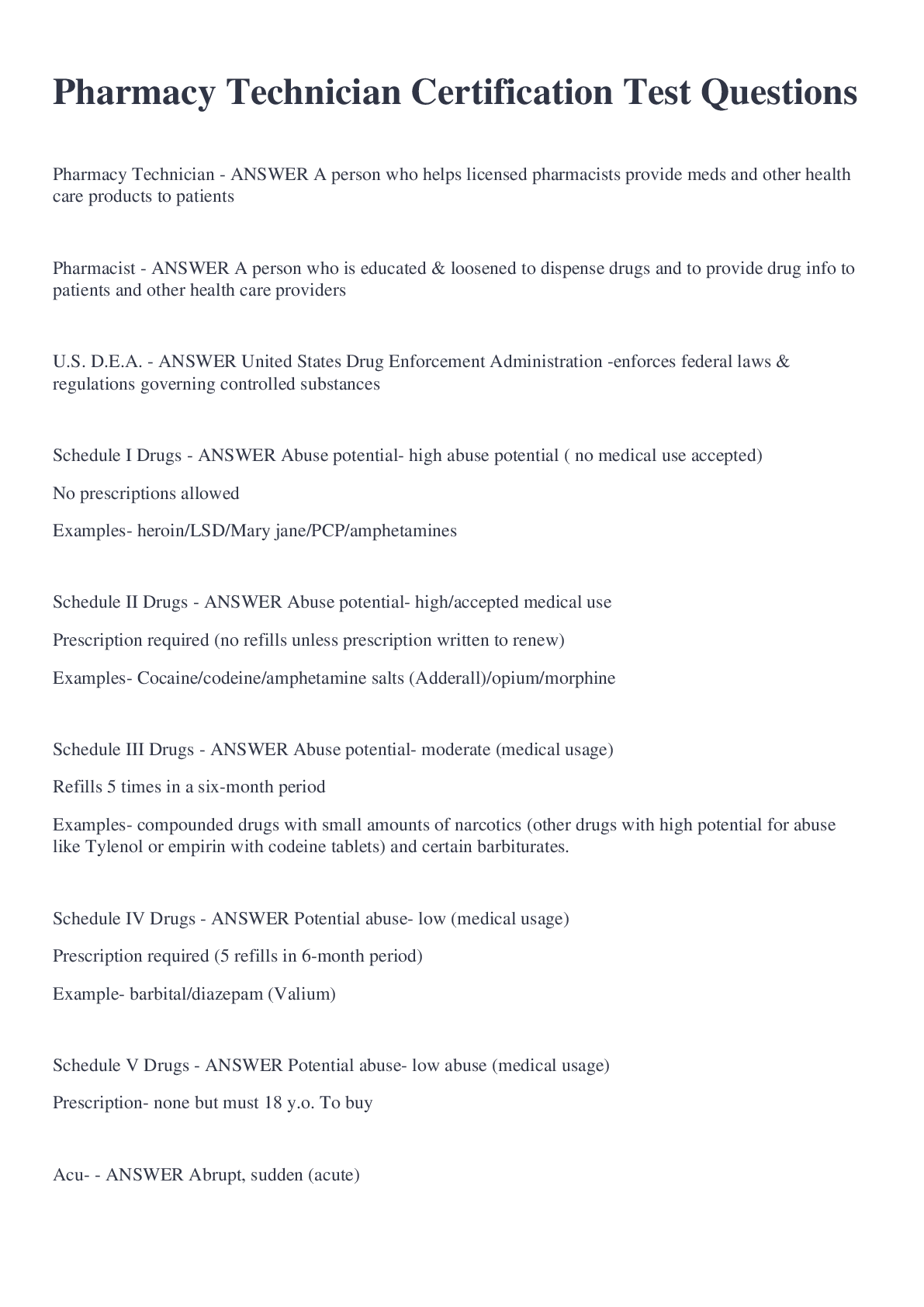



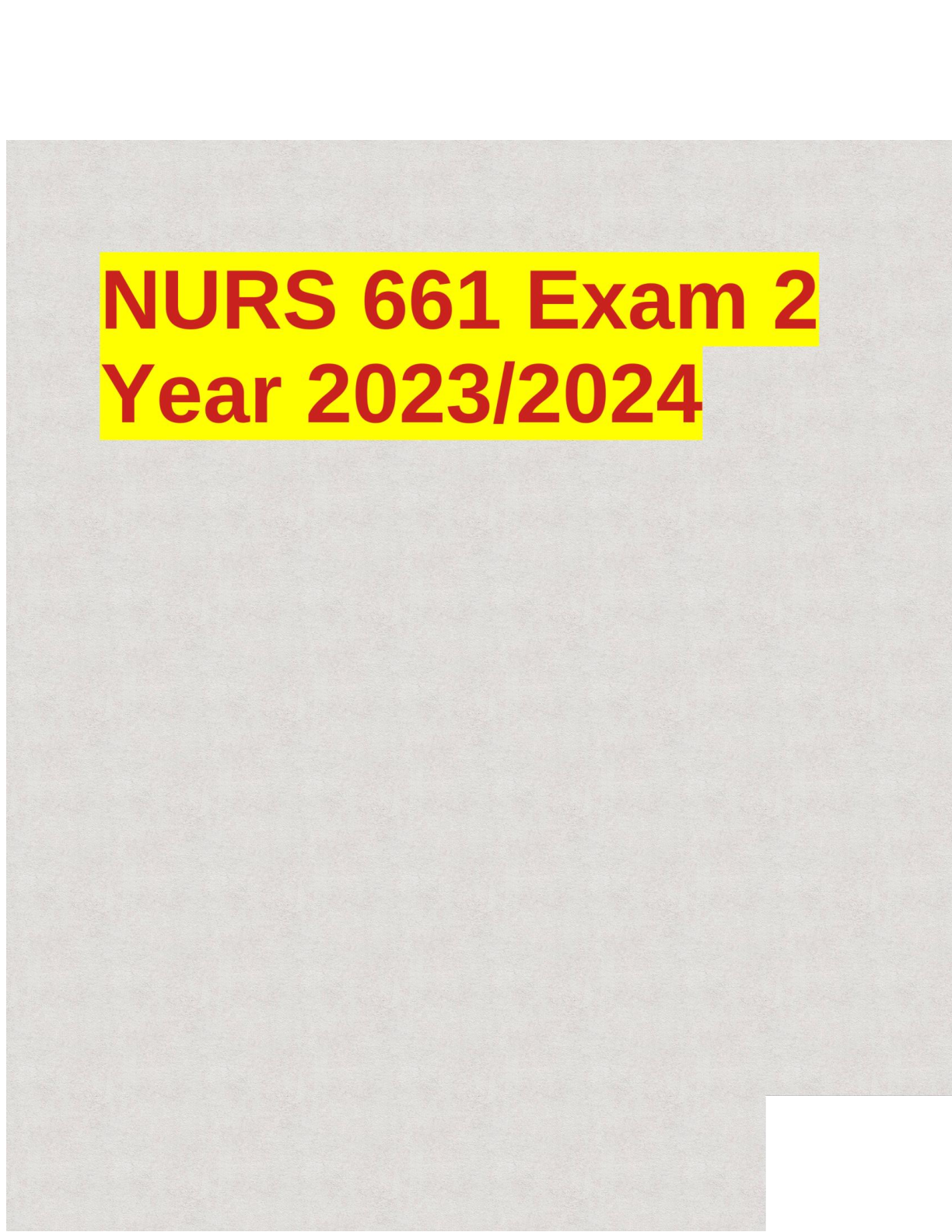



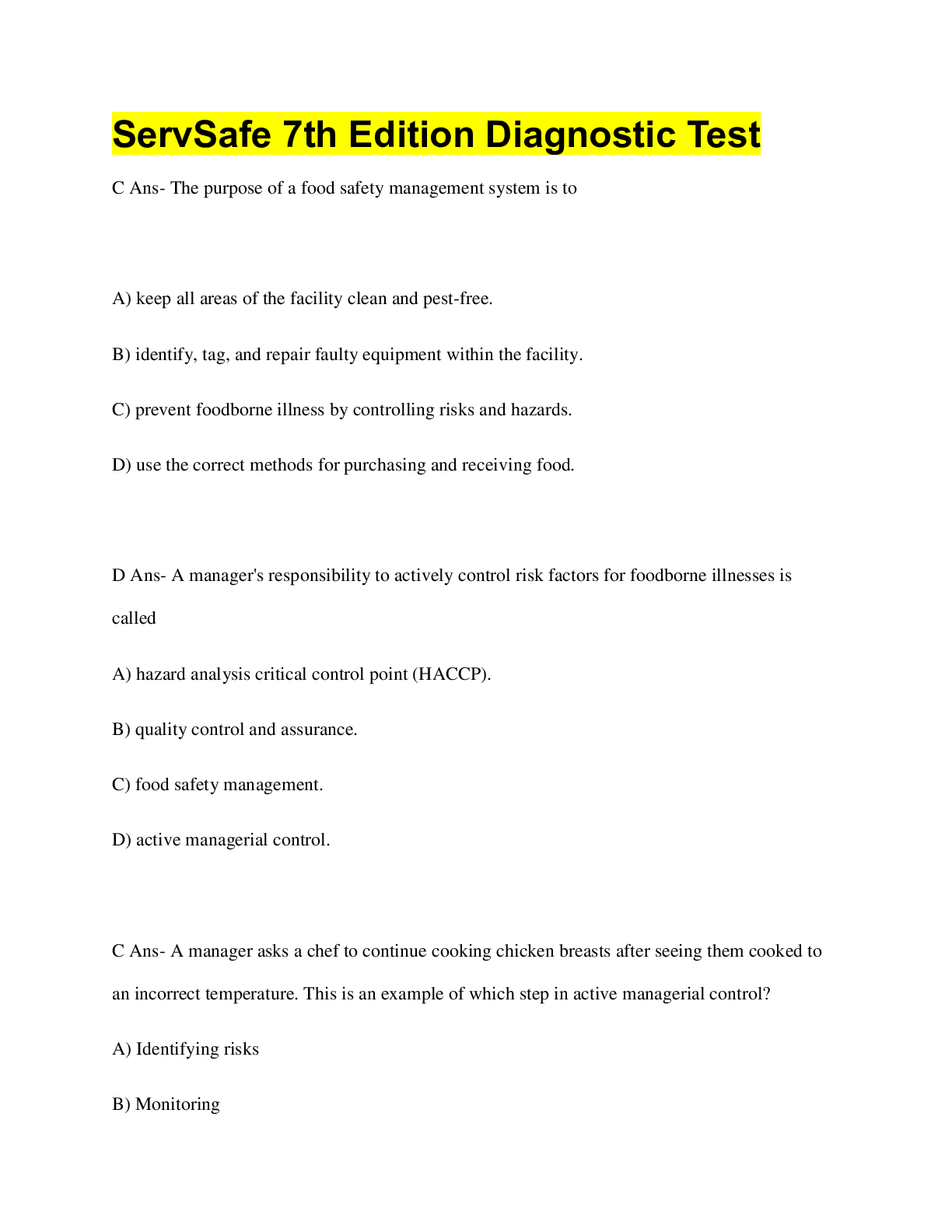
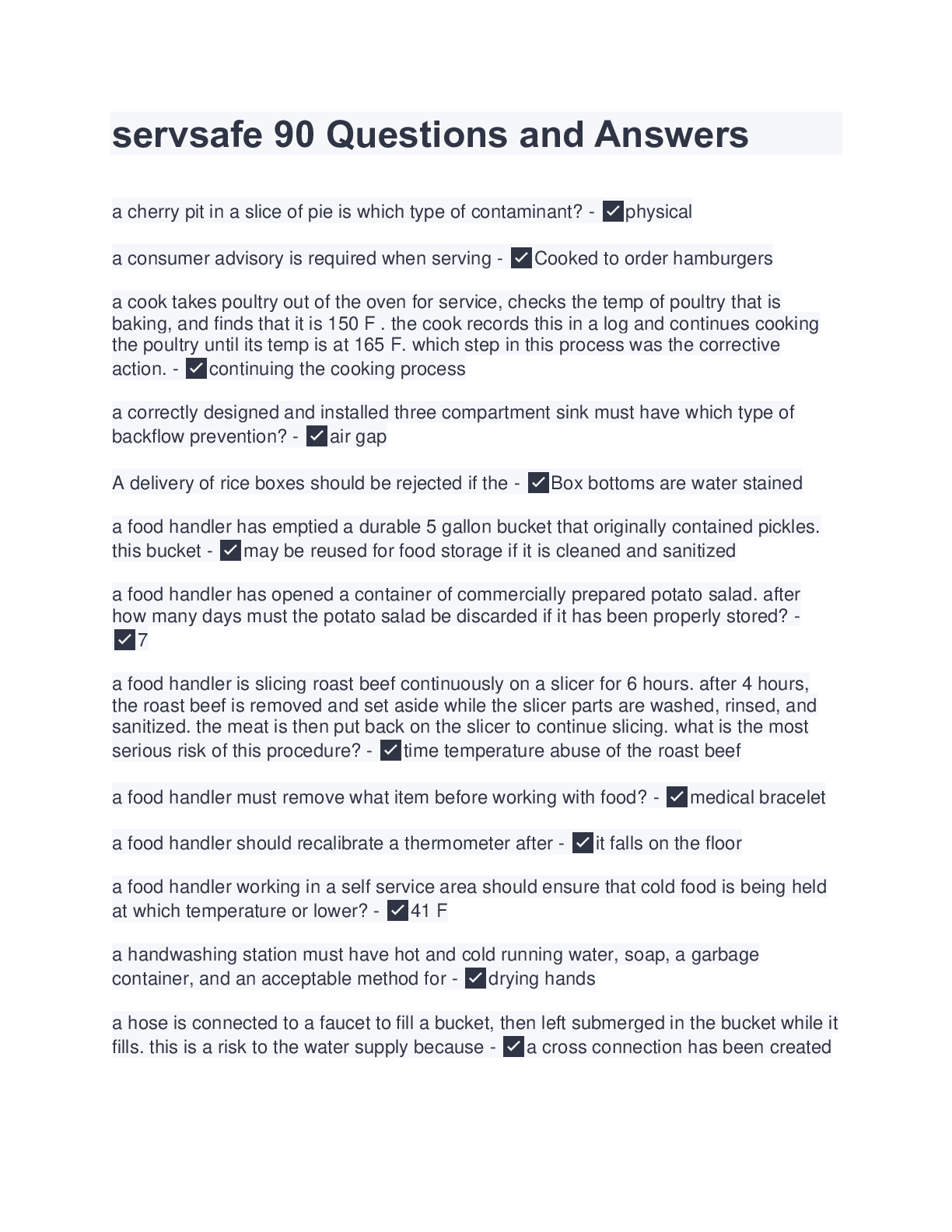
.png)







